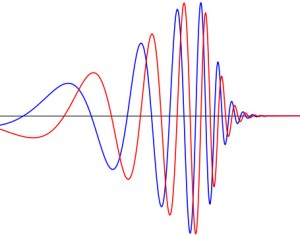The Constant and the Variables
 Why does this keep happening to me?
Why does this keep happening to me?
I carefully listen as a client will tell the same story over and again. The people and locations are variable, but the themes and core of the story are constant. No matter what the variable, the outcome of the stories does not change. Many people cannot hear the similarities in these stories because they are not capable of hearing them. They have programmed themselves to repeat them, to ignore the reality and reason behind their plight. They want to stop the unpleasant outcome, but not the pattern and experience of living their story.
How do you stop a pattern of repeating hurt? The answer starts with statistics.
In statistics there are constants and variables. To understand the effect that one thing has on others, one part of the study must remain the same, the constant. Variables are applied to the constant to see how it responds to the change. Is the outcome different when you add a color, an emotional catalyst, chemical, situation, emotion, or life-changing choice?
The part of our brain that controls these events is not able to see bigger pictures of cause and effect. Its purpose is to repeat a pattern until the outcome expected differs. It does not matter how often the pattern repeats, it is the hope that the result will change that drives the need for repetition. This behavior can be visualized by observing a toddler interacting with a toy of shapes and patterns. This toy is a raised bench with different patterns of holes cut into the surface. The challenge is to take the three-dimensional shapes and determine where a piece fits into the same shape cut into the surface. A toddler, not understanding the cause and effect of their shape matching, could repeatedly attempt to put a square piece into a round surface cutout, hoping that the outcome will differ if enough attempts are made. This behavior is doomed to fail because without a new variable the outcome is the same. The same behavior can occur with adults who repeat similar patterns in relationships or life-changing choices. Adults may move to a new town, get a new job, have new friends, but find themselves with problems and unwanted outcomes similar to those in previous towns.
To move past these behaviors and change the outcome, clients have to identify the patterns they repeat, and why the experience of repeating the pattern is important to them. Unwinding the repeating pattern starts with identifying the constant and the variables. If a person finds themselves in an abusive relationship in four of the last five cities they have lived, but they point to their bad relationship luck, geography, or inability to find a good partner, I ask what thing is the same in all of their experiences? Often the response is a description of the bad behaviors of the partners they met. This is incorrect. The constant in these experiences is my client. If no matter where they go, who they meet, or how they act in a new relationship results is an abusive relationship, then they alone are responsible for the result.
Understanding the source of their problem requires carefully stepping through each experience in detail. With each retelling of the events, we separate the variables from the consistent choices, and when the stories are complete and the steps defined, the evidence and facts are clear. No matter where, what, or when the experience occurs, the only constant is the person at the center for whom these patterns repeat no matter what the variables.
When someone understands that they are the source of these outcomes, they can begin the work of understanding why they have a need to repeat these patterns. For addicts it can be their fear of the future, or the feeling that their life is a failure. For others it can be as simple as trying to change the course of a pattern created when they were young. For many people with these issues the cause are emotions from long past, in some cases more than half a lifetime ago. These emotions are as fresh, powerful and influential on their behavior as something they felt an hour earlier. When emotions drive behaviors like these, the pattern repeated is most often their need to try to change the emotional outcome they experienced long ago. If they succeed in changing the outcome, they succeed in changing the foundation of a part of their life that has brought them confusion, pain and difficulty. Finding the past events that create the need to repeat these negative patterns is the most important step toward resolving the issues. Moving the square shape, to the square hole, and successfully completing the task, means that they are now free to move on and leave behind this challenge and its repetitive emotional pattern.
